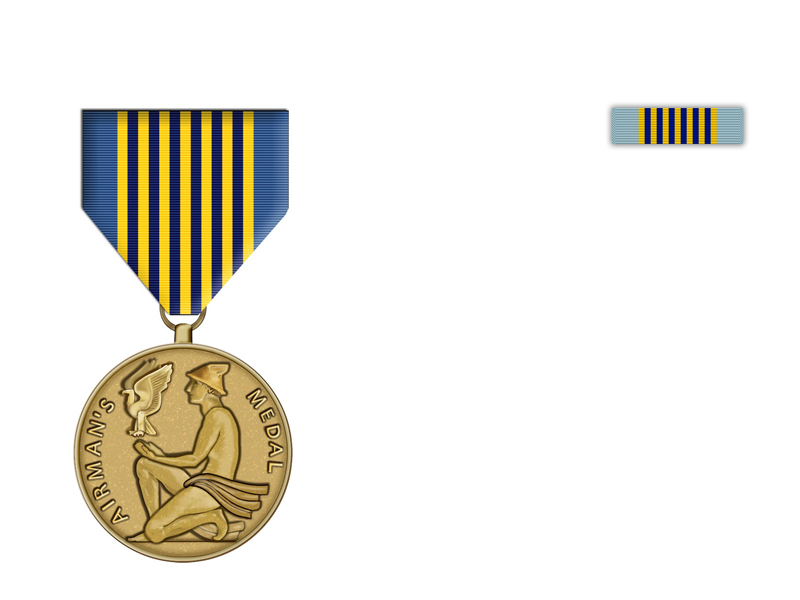Airman's Medal
Authorized on August 10, 1956 and instituted on July 6, 1960. The authorizing directive was an amendment to the directive creating the Soldier’s Medal. The naming of the medal was obviously a carryover from the Soldier’s Medal and does not immediately make one aware of the significance of the act required tob e awarded the decoration. Awarded for actions involving voluntary risk of life under conditions other than combat. A succesful voluntary heroic act or the saving of a life is not essential tot he award of this decoration.
The first Airman’s Medal was awarded to Captain John Burger on July 21, 1960 at McDill AFB, Tampa, Florida for saving a fellow airman’s life by removing a live power line that laid across his body after having been severly shocked.
Another example of the heroism required for award of the Airman’s Medal was the bravery exhibited by Senior Airman Joe Sampson of Charleston AFB, South Carolina when he saved an Army jumpmaster’s life at the risk of his own aboard a C-141 aircraft carrying Army paratroopers. After de jumpmaster’s reserve parachute had extracted inadvertently and threatened to pull him out of the aircraft, Sr Airman Sampson, without hesitation, grabbed the jumpmaster and his chute and pulled him back into the aircraft despite the tremendous forces of the airstream. Previously all the USAF personnel qualifying for such an award were awarded teh Soldier’s Medal.
The American bald Eagle is depicted along with the Greek god Hermes, herald and messenger of other gods, on the face of the medal. The reverse contains space for engraving just below the inscription “For Valor”.
The ribbon is based on that of the Soldier's Medal but using different colors. In the center are alternating thin stripes of yellow and ultramarine, (seven and six, respectively) bordered at the edges with wide stripes of brittany blue.








